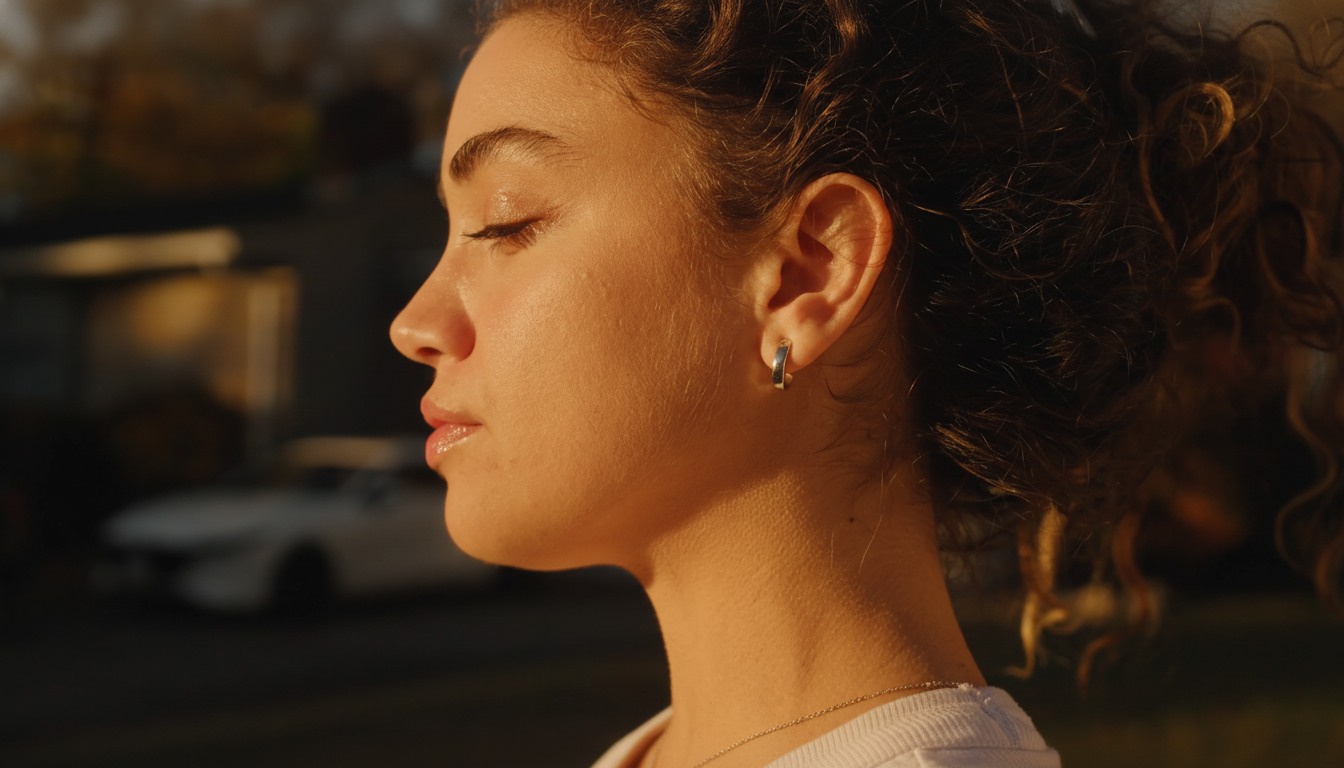Smart rings are hot, but a new wearable wants to take your vitals from an even closer distance. Now, Lumia has introduced the Lumia 2, a pair of smart earrings that continuously measure blood flow to the head, offering a potential glimpse into energy, focus, and the kind of brain fog so many people experience but have trouble quantifying. So far the device is backed by clinical research and comes in a jewelry-like form factor for $249 plus a necessary $9.99 monthly membership (it will make its debut in the U.S. and Canada on iOS and Android).
Why the Ear Might Trump the Wrist for Vital Tracking
There’s real science backing the concept of “earables.” The ear — particularly the lobe and canal — provides fairly constant blood circulation, which is less affected by motion artifacts and temperature disturbances than those on the wrist. Hospitals have long used ear and finger pulse oximeters, and academic groups at places like UC San Diego and MIT have demonstrated that ear-worn sensors are better than wrist devices at getting clean photoplethysmography signals during movement. In thermal sensing, too, the ear more accurately follows changes in core rather than peripheral temperature, useful when modeling sleep and recovery.

At Lumia, the pitch leans on signals from cerebral and cranial blood flow as a missing piece in consumer wearables. The company says preliminary studies it did with collaborators from Johns Hopkins, Duke, and Harvard have shown strong correlations between its optical blood-flow readings and those obtained by ultrasound during controlled tests. It is not an FDA-cleared medical device, although the company is researching diagnostic routes.
How the Lumia Core Operates Inside the Earring
The brains of the system reside in a small earring back that opens to reveal the Lumia Core. Inside is an optical sensor array, more health sensors, a processor, and a battery. The Core snaps onto interchangeable fronts of modular hoops and studs, rendered in gold, silver, or clear; and a patent-pending SwitchBack mechanism so it can clip on most push-back earrings users may already own. There’s also a cuff version if you are not pierced. The entire Core weighs less than one gram, with the goal being not to feel it at all in day-to-day life.
Lumia 2 also has an all-day wear form factor and can be used during workouts, in the shower, and while you are sleeping. A redesigned locking system reduces the risk of accidental loss, and a swappable battery pack permits recharging without interrupting data collection. Each pack is good for five to eight days. In addition to the continuous blood-flow signal, it captures sleep, temperature trends, readiness scores, and menstrual cycle patterns. Bizarrely, the sensing takes place on one ear, but they’re shipped as a pair so people wearing them don’t look lopsided.
What the Data Might Reveal About Energy and Focus
Why chase blood flow? Because a lot of the symptoms people do care about — midday crashes, lightheadedness, brain fog — often don’t present in your typical set of vitals like heart rate or blood pressure. Blood-flow dynamics change in response to hydration, posture, meals, caffeine — even how long you’ve been sitting. Early testers have found patterns of behavior — dips in attention after lunch, triggered by eating heavy carbs; reduced focus after prolonged sitting — that were buried when people only looked at step counts and basic HR data, Lumia claims. Minute-by-minute trends in cranial flow, if confirmed outside the lab, might become a new axis along which to understand fatigue.
Claims will still require independent verification. It’s notoriously difficult to translate clinical-grade signals into consumer-friendly insights, leaving calibration across skin tones, body shapes, and environments a challenge throughout the industry. Lumia 2 is not for diagnosing or treating medical conditions, and new diagnostic functions would require regulatory approval.

Pricing, Availability and Competitors in Smart Earrings
The device is priced to start at $249 during the promotion, with $9.99 monthly membership required for software features — a business model reminiscent of subscriptions offered by Oura and Whoop.
Early access is launching in the U.S. and Canada, where existing Lumia 1 users will be able to upgrade for free through their memberships.
Competition is still young in smart earrings, but not for ear-worn health tech. Sports sensors like Cosinuss have been tracking heart rate and temperature from the ear for years, while component makers like Valencell have been championing earbud-grade PPG processors for just as long. The distinction here is form factor and focus: Lumia is banking on pieces of jewelry you’d actually wear all day, along with software designed around energy and mental clarity as opposed to just workouts and sleep.
The Adoption Hurdles Facing Ear-Worn Health Trackers
Will people want to wear a tracker that lives on their ear instead of their finger or wrist? This will be decided as much by style and comfort as accuracy. Earrings need to stay in during both runs and side-sleeping, and the single-ear sensing approach will raise questions around how durable they are. The market context is positive — analyst notes from the likes of IDC say ear-worn devices are a major category for wearables, with sales increasing over 250% year-on-year this winter thanks to strong demand for true wireless earbuds — but health-first earrings bring a new ask.
If Lumia’s data can credibly tell you why at 3 p.m. you’re crashed and what to do about it — drink something, stretch, eat something different — that’s a productive doorstop. The next big wearable may not wrap around your wrist or ring finger. It might clip on, whisper-quiet, alongside the brain signals you’ve been missing.

